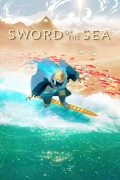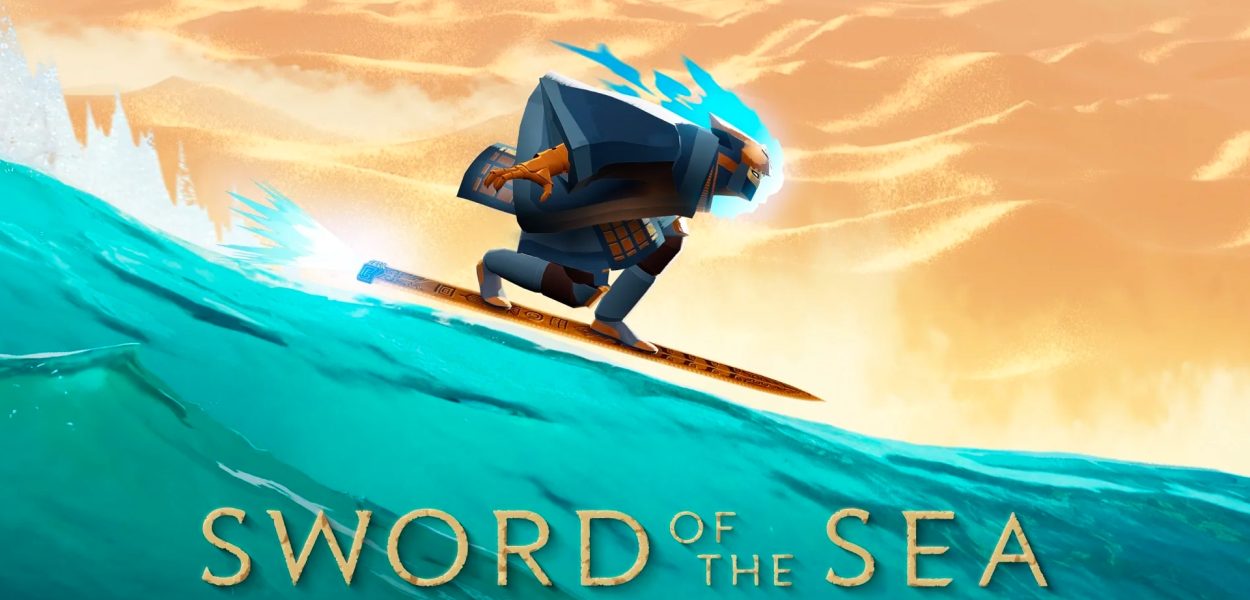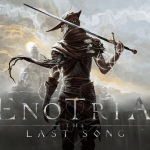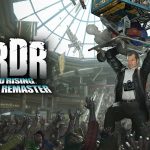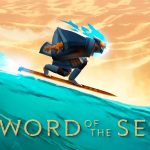Sword of the Sea Review
Overview & Release Info
Sword of the Sea is the latest indie gem from Giant Squid, known for ABZÛ, The Pathless, and Journey. It launches on August 19, 2025, for both Windows (PC) and PlayStation 5, including day-one availability on PlayStation Plus.
Gameplay & Mechanics
The player embodies the Wraith, navigating a surreal desert landscape using a hoversword—a fusion of skateboard, snowboard, and hoverboard mechanics. You’ll zip across shifting sand dunes like a skate park come to life, performing fluid tricks and surf-style maneuvers.
The aim? Restore life and water to a world buried in sand by activating environmental triggers and flooding desolate areas with vibrant blue water.
There’s no combat, and no interface clutter—only pure, meditative movement complemented by environmental storytelling
Art & Visuals
Crafted by Matt Nava—art director of Journey—this game enchants with color, minimalism, and fluid setpieces that blend aesthetics from ABZÛ, The Pathless, and Journey. Expect breathtaking dunes, dynamic landscapes, and wildlife emerging from revived seas.
Audio & Controller Feel
Austin Wintory, composer behind iconic Journey scores, returns to deliver a stirring, wordless score that guides the emotional journey through visuals and movement.
On PS5, the DualSense controller enhances immersion with haptic feedback that varies with terrain—feel the grit of sand, fluidity of water, and the metal of chains as you grind.
Overall Impression
Sword of the Sea is a bold stride toward creating games that prioritize emotional resonance and fluidity over combat or narrative exposition. Many hands-on previews praise its meditative magic:
“It felt refreshed, cleansed by the majesty”
“Beautiful, soothing, and set to a score by Austin Wintory.”
It’s a spiritual successor to Giant Squid’s earlier work—in art, pace, and atmosphere—but with fresh ideas focused on environmental revival and exploratory freedom.
PC (Steam / Windows)
System Requirements
- Minimum specs (per Steam & Epic listings):
- OS: Windows 10
- CPU: Quad-core Intel or AMD, 2.5 GHz or faster
- RAM: 8 GB
- GPU: NVIDIA GTX 900 series or newer, AMD GCN 5 or newer
- DirectX: Version 12
- Storage: ~15 GB
Performance & Optimization
- No hands-on performance tests exist yet (game launches Aug 19, 2025), but the specs suggest it’s designed for mid-range systems.
- With those hardware requirements, achieving 60 FPS+ on a modern machine is very plausible—though this will depend on visual settings and GPU horsepower.
PS5 Version
Technical Features
- Fully leverages the DualSense controller, providing haptic feedback and adaptive triggers that respond distinctively to different surfaces like sand, water, and rooftops.
Performance Reports & Feedback
- Some users report occasional FPS drops and texture shimmering, but overall immersion remains high: “There are a few hiccups but won’t be noticeable!… very few times you do notice a slight FPS drop.”
- Others cite more problematic performance issues: “The performance is abysmal.”
“Performance is terrible. It regularly fluctuates between 60 and sub-20 FPS.” - It’s worth noting performance varies between users—some report smooth experience, others see frame rate instability, especially in demanding scenes.
Pros
- Stunning, art-directed visuals that create a meditative, memorable atmosphere.
- Exceptionally satisfying movement/“surfing” mechanics — flowy traversal is the core joy.
- Emotional, high-quality soundtrack that enhances the tone and pacing.
- PS5 DualSense haptics add tactile immersion (terrain, tricks, water).
- Low-stress, non-combat experience ideal for players who want relaxation and exploration.
- Focused design — easy to pick up for short sessions.
Cons
- Limited long-term gameplay depth for players who want complex systems or heavy progression.
- May feel short or too minimal for completionists looking for many hours of content.
- Lack of combat/narrative beats may disappoint players expecting more traditional objectives.
- Minimal UI and sparse guidance can be obtuse for players who prefer clear goals.
- Potential motion/movement discomfort for some players (intense traversal can cause nausea).
- PC performance will depend on hardware — settings/performance variability possible.
In This Article
